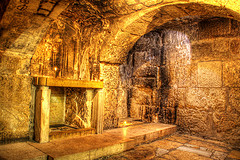Stage 2: SemifinalistsThis year, because of the large number of submittals and their high quality, we are happy to announce that we have expanded the number of Semifinalists. Architecture students from 21 countries entered this year's competition. Thirty-three authors from 12 countries have advanced to the Semifinalist round (Stage Two) of the BERKELEY PRIZE 2011 competition. Semifinalists are invited to submit a 2500-word Essay based on their 500-word Proposal. The top five to seven essays will be selected for final judging by this year’s BERKELEY PRIZE Jury. All authors, whether promoted to Semifinalist status or not, can login to view the Readers’ comments regarding your Proposals. New instructions for this year’s Semifinalists are included below. Semifinalist WinnersFatema Al Zeera, University of California, Berkeley, USA Joseph Audeh, New York University, USA Acellam Benard, Makarere University, Uganda Carson Booth, Montana State University, USA Edward Couper, University of Melbourne, Australia Rebecca David, Bezalel Academy of Art and Design, Israel Sapan Gajjar, CEPT University, India Carrie Gammell and Seth Goodman, Rice University, USA Hriday Gami, CEPT University, India Richa Girdhar and Dhruv Batra, Birla Institute of TechnologyIndia Rachel Haugen, Montana State University, USA Britni Jeziorski, Montana State University, USA Milenka Jirasko, Montana State University, USA Simon Lussier, McGill University, Canada Diana Alexandra Mihai, Ion Mincu University, Romania Christina Monzer and Randa Tarabay, University of California, Berkeley, USA Asha N M, R.V. College of Engineering, India Davis Owen, Washington University in St. Louis, USA Rushil Palavajjhala, CEPT University, India Matthew Pinyan, North Carolina State University, USA Iswarya Ramachandran, Visvesvaraya National Institute of Technology, India Henry Richardson and Nicola Stathers, University of California, Berkeley, USA Nourah Said, Auburn University, Kuwait Marina Sapunova, Vladimir State University, Russia Yara Saqfalhait, Birzeit University, Palestinian Territories Holly Simon, Dalhousie University, Canada Kari Summers, Texas Tech University, USA Nirmal Sylvester, Thiagarajar College of Engineering, India Chris Taleff, Montana State University, USA Preeti Talwai, University of California, Berkeley, USA Emma Tome and John Carroll, University of California, Berkeley, USA Iina Valkeisenmäki, Aalto University, Finland Ng Qian Zhi and Pek Ling Yong, National University of Singapore, Singapore General InformationWe compliment all of the Semifinalists on the extraordinary diversity of ideas and approaches in response to this year’s Question. Such responses indicate the depth of interest in and concern for Architecture as a Social Art. As an essay competition, the BERKELEY PRIZE encourages the translation of these interests and concerns into a format for communication both to those within the profession and the wider public. In Stage Two, you are to expand upon your chosen topic in 2,500 words. The BERKELEY PRIZE Committee encourages Semifinalists to improve the crafting of their ideas. A few suggestions seem appropriate:
IllustrationsThis year, we are asking that you include four (4) digital photographs of your selected place with your essay. One of these photos can be the image you already posted with your Proposal, but it needs to be re-posted. The photograph should be no larger then 1 MB, and be in ,jpeg format. No more then four photographs will be accepted. You can use a digital camera, a film camera (and scan the printed image), or even capture the image on a cell phone and transfer it to your document. There is space provided at the end of the submittal form to upload the images. Space is also provided to number and caption each image. In selecting these four images, imagine that a publisher or editor of an online blog, or a newspaper, or a magazine have accepted your essay for publication. One of their requirements is that you supply four illustrations that help describe and explain the points made in your essay. What illustrations would you provide that not only provided the basic information about your topic, but also help further your written arguments? As part of this process, refer to these illustrations at the appropriate spots within your essay. Remember, however, one of the primary purposes of the essay format is to test your skill in describing a place or building in words, rather then pictures or drawings. So, do not assume that just because you have posted the photographs that your responsibility to carefully describe your selected place is reduced. To the contrary: use the illustrations to support and strengthen your writing. Improving Your WritingYou have almost six weeks to produce your essay in final form. Use as much of this time as possible to attempt to actively improve your writing abilities, particularly if English is not your first language. Read some good prose written in English, especially essays, whether from the field of architecture or from other disciplines. In architecture, search for articles written by architectural journalists and popular architectural historians who write for a general audience online, in newspapers, and in widely circulated magazines. Think about how they present arguments and describe buildings and places. Use websites, such as refdesk.com, to improve your English vocabulary, syntax, and spelling. Avoid the use of professional language unfamiliar to many of your intended readers, except where absolutely necessary. Above all, avoid jargon. In describing your subject matter you might want to use this “trick”: Imagine that you are describing the building or place to a person who, unfortunately, lost their sight after years of being able to see. How would you describe this new building or place to them using only their memories of how other places looked?
Whether or not English is your first, second, or fifth language, again, do not hesitate to review your essay with an experienced English language-speaker and writer. Use their suggestions as how to make your argument as clear and precise as possible. Proposals due anytime before midnight, GMT, February 1, 2011 Additional Help and InformationAre you in need of assistance? Please email info@berkeleyprize.org. |
|

